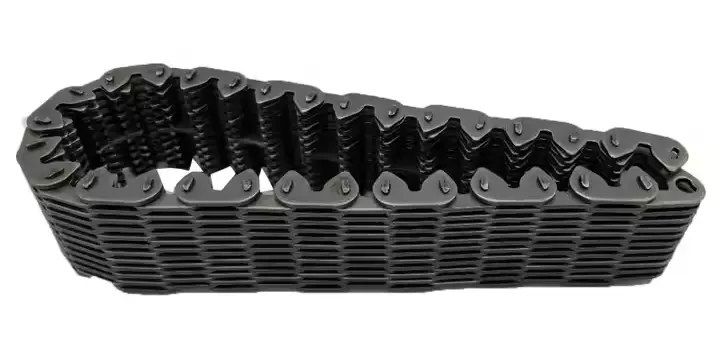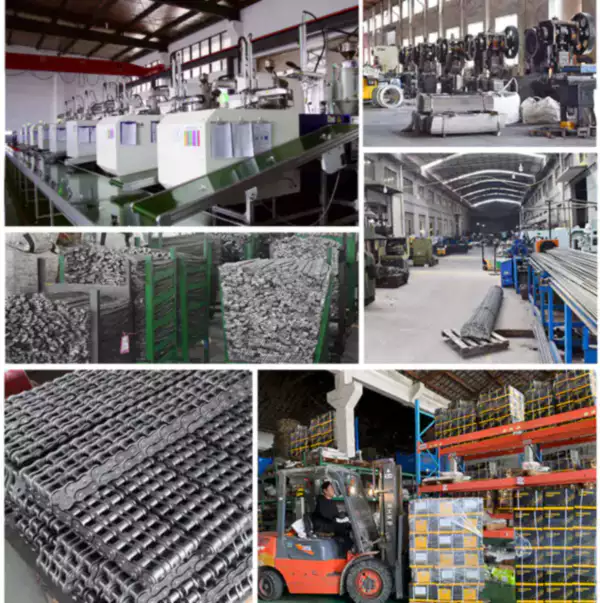Timing chains are essential components in engines and power transmission systems, but not all timing chains are the same. Inverted tooth timing chains are unique, and their design provides a range of benefits that other types of chains do not offer. In this article, we will explore the differences between inverted tooth timing chains and other types.
Overview of Timing Chains
Timing chains are designed to synchronize the rotation of the crankshaft and camshaft in an internal combustion engine. The chain must be strong, durable, and able to withstand high temperatures and vibrations. There are several types of timing chains, including roller chains, silent chains, and inverted tooth chains.
What Is an Inverted Tooth Timing Chain?
Inverted tooth timing chains have a unique design that sets them apart from other types of chains. They consist of a series of tooth-shaped links with curved backs that engage with matching sprocket teeth to provide smooth, quiet operation. The chain links are shorter and wider than those of a standard timing chain, which reduces the amount of surface area in contact with the sprockets and minimizes wear and noise.
Advantages of Inverted Tooth Timing Chains
Inverted tooth timing chains offer several advantages over other types of chains:
- Smooth, quiet operation due to the matching tooth profile
- Reduced wear due to the shorter, wider links
- Less friction due to the reduced surface area in contact with the sprockets
- Higher power transmission capacity due to the greater contact area between the chain and sprockets
- Lower maintenance due to the reduced wear and longer service life
Overall, inverted tooth timing chains are an excellent choice for applications that require quiet, reliable operation and minimal maintenance.
Inverted Tooth Timing Chains vs. Silent Chains
Silent chains are another type of timing chain that is commonly used in power transmission systems. Silent chains have a simpler design than inverted tooth timing chains, consisting of flat links that engage with sprocket teeth. While silent chains are also designed to provide smooth, quiet operation, they do not offer the same level of performance as inverted tooth timing chains.
Inverted tooth timing chains have a greater contact area with the sprockets than silent chains, which allows them to transmit more power with less friction. Inverted tooth chains also have a more complex design, which makes them better suited for high-performance applications.

Applications of Inverted Tooth Timing Chains
Inverted tooth timing chains are commonly used in high-performance engines, racing cars, and other demanding applications. They are also used in power transmission systems in industries such as aerospace, automotive, and industrial equipment.
Inverted tooth timing chains are particularly well-suited for applications that require smooth, quiet, and reliable operation, such as overhead camshaft engines, where they provide excellent performance and durability.

Sprockets for Silent Chains
Sprockets for silent chains are an essential component of power transmission systems. The sprockets must be precisely machined to match the flat links of the chain and provide smooth, reliable operation. Inverted tooth timing chains also require specially designed sprockets that match the tooth profile of the chain.

Inverted tooth timing chains and sprockets are designed to work together to provide smooth, reliable power transmission. The tooth profile of the chain engages precisely with the sprocket teeth, providing maximum contact and minimizing wear and noise. Without the proper sprockets, the performance and reliability of the chain would be compromised.
About Us
RP Techniek BV is the Netherlands sales agent for the Ever-power Group. We are a leading supplier of silent chains and other power transmission components. Our products are exported to markets worldwide, including the United States, Canada, Japan, Korea, Brazil, and Australia. We are committed to providing competitive prices and high-quality service to our customers.

Q&A
Q: What is the maximum power transmission capacity of an inverted tooth timing chain?
A: The power transmission capacity of an inverted tooth timing chain depends on several factors, including the number of teeth, the diameter of the sprocket, and the speed of the chain. In general, inverted tooth timing chains can transmit more power than roller chains or silent chains due to their greater contact area with the sprockets.
Q: How do inverted tooth timing chains reduce wear and noise?
A: Inverted tooth timing chains have shorter, wider links than standard timing chains, which reduces the surface area in contact with the sprockets and minimizes wear and noise. The tooth-shaped links also engage with matching sprocket teeth, providing a smooth, quiet operation.
Q: What are the benefits of using inverted tooth timing chains in overhead camshaft engines?
A: Inverted tooth timing chains are ideal for overhead camshaft engines because they provide smooth, reliable operation and can transmit more power than other types of chains. The shorter, wider links and tooth-shaped profile of the chain reduce wear and noise, while the greater contact area with the sprockets provides higher power transmission capacity.
Q: Can inverted tooth timing chains be used in any power transmission system?
A: Inverted tooth timing chains are suitable for a wide range of power transmission systems, from high-performance engines to industrial equipment. However, they require specially designed sprockets that match the tooth profile of the chain, so it's essential to ensure that the sprockets are compatible before using an inverted tooth timing chain.
Q: How do I choose the right sprockets for my inverted tooth timing chain?
A: Choosing the right sprockets for your inverted tooth timing chain depends on several factors, including the number of teeth, the diameter of the sprocket, and the speed of the chain. It's essential to use sprockets that are designed to match the tooth profile of the chain to ensure smooth, reliable operation.
Edited by: Zqq.
